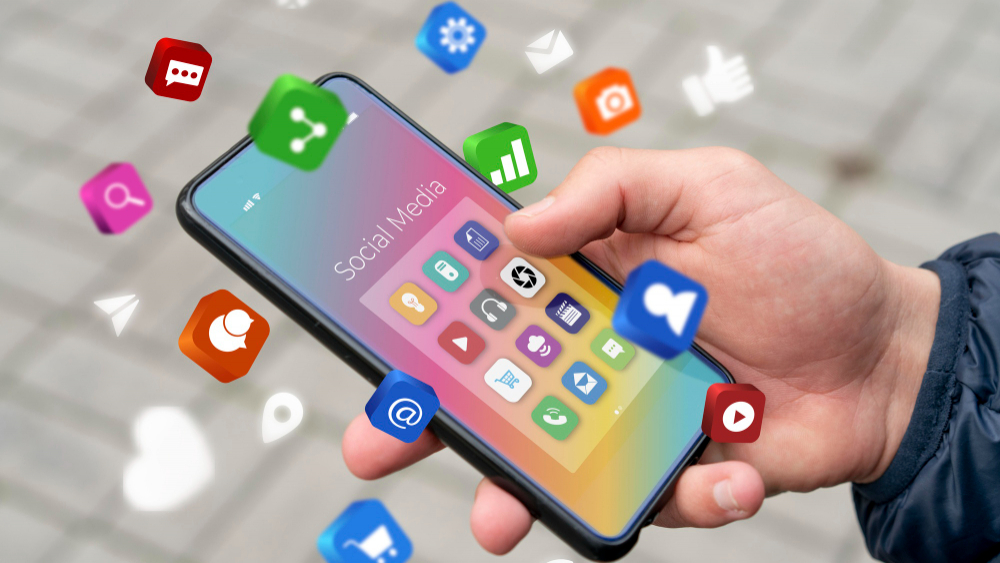Mobile applications have transformed our world over the last decade. From social networking and banking to healthcare and e-learning, apps have become the backbone of our daily lives. But as technology continues to accelerate at an unprecedented pace, what will mobile applications look like in 2030? Will they still live on the same smartphone screens we know today, or evolve into something far more immersive and intelligent? Let’s explore the trends followed up by leading mobile app developers, technologies, and possibilities that will shape the future of mobile applications by 2030.
Reference: https://www.xpertsolutions.qa/xpert-solutions-services/mobile-app-developers-qatar/
1. Apps Will Be Smarter With AI Everywhere
By 2030, artificial intelligence (AI) will be deeply embedded in almost every mobile application. We’re already seeing the beginnings of this shift with AI-powered chatbots, personalized recommendations, and voice assistants. But in the future, apps will go beyond reacting to user commands. • Predictive Apps: Imagine a fitness app that suggests workouts based not only on your goals, but also your sleep patterns, stress levels, and even upcoming calendar events. • Self-Learning Systems: Apps will continuously adapt and learn from your behavior without requiring constant updates from developers. • Emotion-Aware Experiences: Advanced AI could detect user moods from voice, facial expressions, or typing patterns, adjusting content accordingly. AI won’t just be a feature—it will be the foundation of most mobile applications. App developers will be opening new possibilities to users with enhanced AI features.
2. The Rise of AR and VR-Driven Apps
The next decade will see mobile applications breaking free from the flat 2D screen. Augmented Reality (AR) and Virtual Reality (VR) will become mainstream. • AR Shopping Apps: By 2030, you might try on clothes, test furniture in your living room, or preview makeup shades through immersive AR apps before making a purchase. • VR Social Media: Instead of scrolling feeds, users could step into virtual spaces where they interact with friends as avatars in lifelike environments. • Immersive Education: Schools and universities will use VR-powered apps for history lessons where students walk through ancient civilizations, or science classes with virtual lab experiments. Apps will become experiences rather than tools.
3. Voice and Gesture Will Replace Touch
Touchscreens may not disappear entirely, but they will no longer be the primary way of interacting with mobile apps. By 2030, voice commands, gestures, and even thought-based controls could dominate. • Voice-First Apps: Imagine using a banking app where you simply say, “Transfer $100 to Sarah,” and it happens instantly with voice authentication. • Gesture Controls: Apps for entertainment or gaming will allow users to control functions with hand movements detected by advanced sensors. • Brain-Computer Interfaces (BCI): Although still experimental, BCIs could enable apps to respond directly to brain signals, eliminating physical interaction altogether. This will make mobile applications faster, more inclusive, and more natural to use.
4. Ultra-Personalization and Hyperconnectivity
By 2030, the Internet of Things (IoT) will fully integrate into our daily lives, and mobile apps will be the central hubs controlling this vast ecosystem. • Smart Homes: Your app won’t just turn off lights—it will predict when you’re coming home and set the right temperature, playlist, and lighting automatically. • Wearables Integration: Apps will seamlessly collect and analyze health data from wearables, giving users real-time insights about fitness, diet, and overall well-being. • City-Wide Connectivity: Apps will integrate with smart cities, helping users find parking, track public transport in real time, and monitor energy consumption. Every app will feel custom-made for the individual.
5. Super Apps Will Dominate
Inspired by models like WeChat in China, super apps will become the norm by 2030. Instead of downloading dozens of single-function apps, users will rely on one or two multi-functional ecosystems. A super app could combine messaging, shopping, payments, healthcare, entertainment, and government services in a single interface. With AI integration, these apps will be able to predict needs and offer services proactively. For users, this means less clutter and more convenience. For businesses, it means a race to become part of—or build—the next big super app ecosystem.
6. Privacy and Security Will Be Central
As apps become smarter and more connected, the risk of data misuse will grow. By 2030, mobile applications will need to strike a delicate balance between personalization and privacy. • Decentralized Apps (dApps): Built on blockchain, these apps won’t rely on central servers, giving users more control over their data. • Zero-Knowledge Proofs: Apps could verify identity or transactions without revealing sensitive personal details. • Privacy-as-a-Feature: Just as users now demand sleek design, by 2030 they’ll demand apps that protect their data by default. Trust will be as important as functionality.
7. Faster, Seamless Experiences
With 6G By 2030, 6G networks are expected to be in widespread use. Mobile applications will be built around ultra-fast speeds, near-zero latency, and massive connectivity. • Instant Streaming: Downloading entire movies or massive games in seconds will be normal. • Cloud-Powered Apps: Many apps won’t need to be installed locally, running entirely in the cloud for faster updates and lower device storage usage. • Real-Time Collaboration: Work, play, and communication apps will function seamlessly across devices with no delays. Connectivity will fuel innovation in ways we can only imagine today.
8. Sustainability and Green Apps
As climate change continues to shape global priorities, apps in 2030 will reflect sustainability concerns. • Eco-Friendly Features: Travel apps may automatically suggest the lowest-carbon route. • Digital Carbon Tracking: Personal apps will track your energy consumption, shopping habits, and travel to provide a “carbon score.” • Green Development Practices: Developers will adopt more energy-efficient coding and data practices to reduce environmental impact. Users will expect their apps not just to serve them, but to serve the planet.
Conclusion
By 2030, mobile applications will be unrecognizable compared to the apps we use today. They will be intelligent, immersive, predictive, and deeply interconnected with every aspect of our lives. From AI-driven personalization and AR-powered experiences to super apps and brain-controlled interfaces, the future of mobile applications is as exciting as it is transformative. One thing is certain: apps will no longer simply be tools we open on our smartphones—they will become extensions of ourselves, anticipating needs, solving problems, and connecting us to a smarter, more sustainable world.







